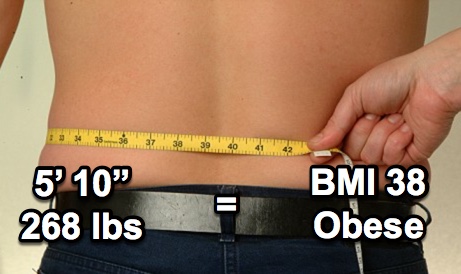 Fat vs Muscle
Fat vs Muscle
Fat, or adipose tissue, has a density of approximately 0.9 kilograms/cubic meter (kg/m3)
Muscle tissue has a density of approximately 1.06 kg/m3
Density - is the ratio of the mass of a substance to its volume. The standard SI unit for density is the kg/m³ (kilogram per cubic meter), the symbol is ρ.
Density formula:
ρ =m/v
where: m=mass | v=volume
Using some basic math and knowing the densities as we have listed above, we can plug in each to solve for mass.
Fat: ( 0.9 kg/m³) x V(m³) = mass (kg)
Muscle: (1.06 kg/m³) x V(m³) = mass (kg)
Clearly, placing the same number (any number) in each of the Volume variables will produce a larger mass (weight in kilograms in this case) for muscle than for fat. This is the basis by which the accuracy of BMI decreases as an individual increases in fitness level and can lead to this:

Male Individual A: Height = 5'10" | Weight = 265 lbs | BMI = 38 = Obese

Male Individual B: Height = 5'10" | Weight = 265 lbs | BMI = 38 = Obese
The two images and underlying measurements resulting in an identical BMI of 38 (obese) illustrates the missing piece of the BMI puzzle: body fat percentage.